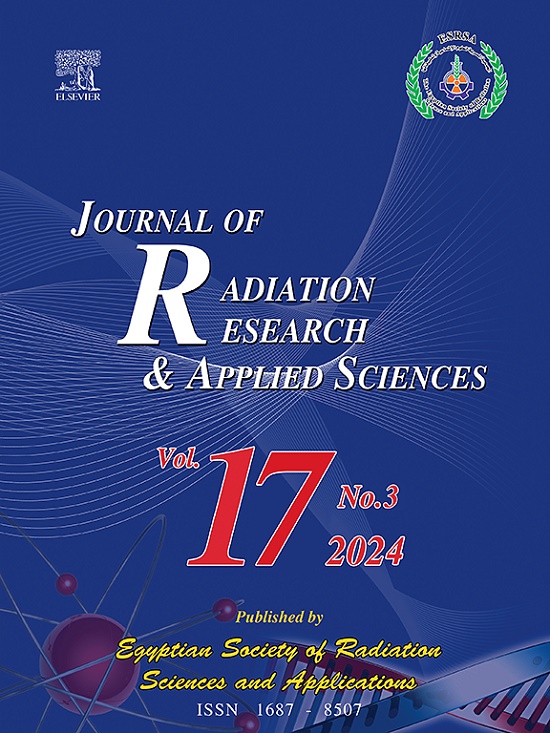The modified sign test under indeterminacy with application to COVID-19 data
IF 1.7
4区 综合性期刊
Q2 MULTIDISCIPLINARY SCIENCES
Journal of Radiation Research and Applied Sciences
Pub Date : 2025-05-14
DOI:10.1016/j.jrras.2025.101583
引用次数: 0
Abstract
The sign test is a non-parametric method for assessing median differences in paired observations, especially when parametric assumptions (e.g., normality for paired t-tests) are violated. However, its conventional form is limited to exact categorical data (binary/ordinal) and cannot handle interval-valued data (measurements expressed as ranges), restricting its use in cases of imprecise, vague, or indeterminate observations. To address this gap, we propose a modified neutrosophic sign test that incorporates indeterminacy, enabling analysis of interval-valued data for both one-sample and two-sample hypothesis testing under uncertainty. We validate its efficacy through two real-world case studies: (1) assessing COVID-19 reproduction rates to evaluate transmission dynamics and (2) analyzing daily ICU occupancy trends for COVID-19-positive patients in Pakistan. These applications highlight its adaptability in public health scenarios with data variability. Results confirm that the neutrosophic sign test effectively resolves nonparametric decision-making problems involving interval data, providing robust statistical insights in fields like engineering, biological sciences, and public health—where indeterminate data are common. By accommodating imprecision, this approach enhances the traditional sign test's versatility, making it a practical tool for modern statistical analysis in complex, uncertain environments.
不确定条件下的改进符号检验在COVID-19数据中的应用
符号检验是一种非参数方法,用于评估成对观察的中位数差异,特别是当参数假设(例如,成对t检验的正态性)被违反时。然而,它的传统形式仅限于精确的分类数据(二进制/序数),不能处理区间值数据(以范围表示的测量值),限制了它在不精确、模糊或不确定观测值的情况下的使用。为了解决这一差距,我们提出了一种改进的中性粒细胞符号检验,该检验包含不确定性,能够在不确定性下对单样本和双样本假设检验的区间值数据进行分析。我们通过两个现实世界的案例研究验证了其有效性:(1)评估COVID-19的繁殖率以评估传播动态;(2)分析巴基斯坦COVID-19阳性患者的每日ICU占用趋势。这些应用突出了其在具有数据可变性的公共卫生情景中的适应性。结果证实,嗜中性标志测试有效地解决了涉及区间数据的非参数决策问题,为工程、生物科学和公共卫生等领域提供了强大的统计见解,这些领域的不确定数据很常见。通过适应不精确,这种方法增强了传统符号测试的多功能性,使其成为复杂、不确定环境中现代统计分析的实用工具。
本文章由计算机程序翻译,如有差异,请以英文原文为准。
求助全文
约1分钟内获得全文
求助全文
来源期刊

Journal of Radiation Research and Applied Sciences
MULTIDISCIPLINARY SCIENCES-
自引率
5.90%
发文量
130
审稿时长
16 weeks
期刊介绍:
Journal of Radiation Research and Applied Sciences provides a high quality medium for the publication of substantial, original and scientific and technological papers on the development and applications of nuclear, radiation and isotopes in biology, medicine, drugs, biochemistry, microbiology, agriculture, entomology, food technology, chemistry, physics, solid states, engineering, environmental and applied sciences.
 求助内容:
求助内容: 应助结果提醒方式:
应助结果提醒方式:


